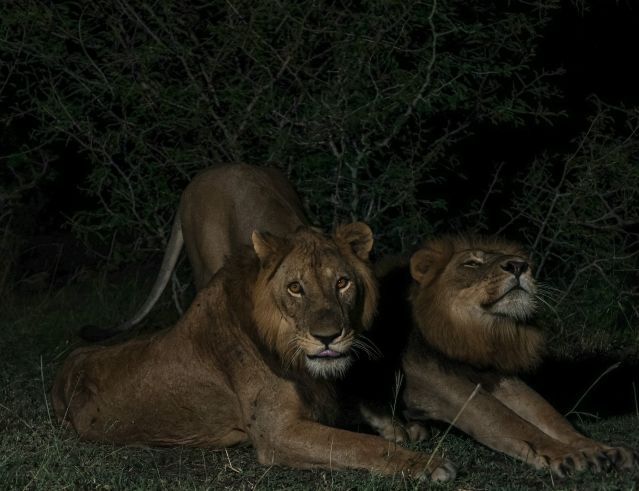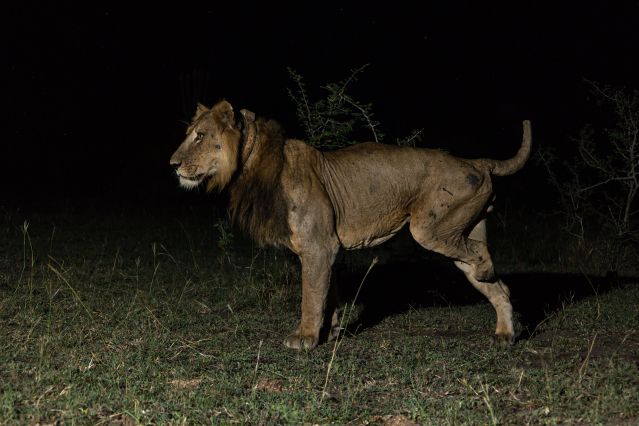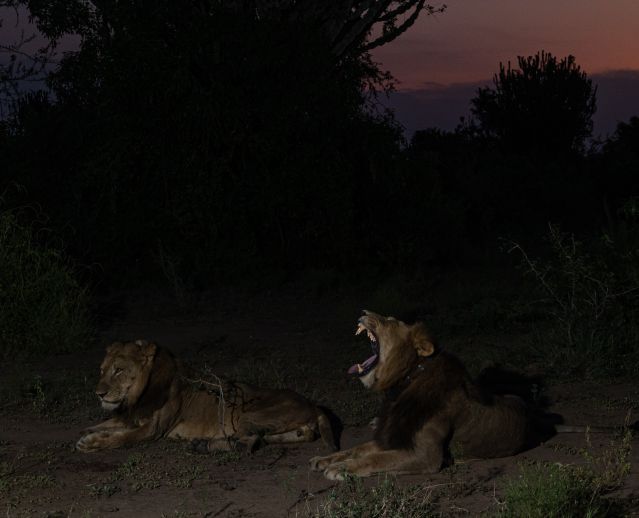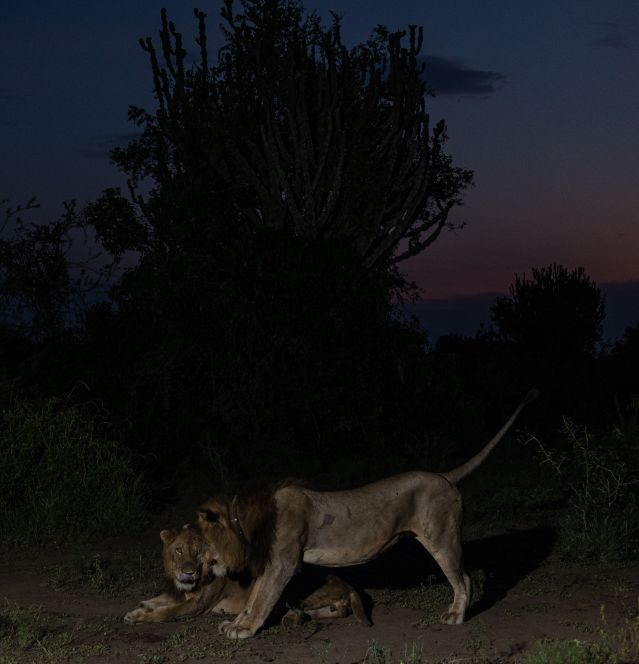Resilience
Lion Brothers Make Record-Breaking Long-Distance Swim
The risky trek exemplifies the lions’ resilience in a changing world.
Updated July 10, 2024 Reviewed by Lybi Ma
Key points
- Researchers observed two male lions swim more than one km to cross a river in western Uganda.
- The unprecedented behavior demonstrates the lions’ resilience and determination.
- The risky swim also reflects the increasing human pressures faced by wildlife.

Researchers have documented a record-breaking swim by two lion brothers in western Uganda. The pair was observed multiple times swimming nearly one mile to cross the predator-infested Kazinga channel—a feat made even more impressive by the fact that one of the lions is missing a leg.
Battle-Scarred Brothers
Alexander Braczkowski is a conservation biologist and wildlife filmmaker. In 2017, he began working with the Ugandan government to census lions across several of the country’s National Parks. That’s also the year he met Jacob.
At the time, Jacob was two and a half years old and growing up in a unique pride of lions known for their penchant for climbing trees. Braczkowski, who was filming the lions for a Disney Plus documentary (Tree Climbing Lions), says he had little idea of the challenges that young Jacob would face.
He has been gored by a buffalo. His family was poisoned for the trade in lion body parts. He survived being caught in one poacher’s snare only to lose his leg in another poacher’s steel trap.

“Now, Jacob is in the twilight of his life,” says Braczkowski. “He’s pushing ten years of age, and we’re still seeing him do incredible things, like this long-distance swimming that no one’s ever seen before.”
The field team behind this report consisted of Braczkowski, Luke Ochse, Bosco Atukwatse, and Orin Cornille. From February 2023 to February 2024, they observed Jacob and his brother Tibu swimming across the Kazinga channel in Queen Elizabeth National Park six times. In February 2024, the team recorded the behavior using thermal cameras mounted on drones.
The researchers estimate the distance swum to be between 1.1-1.5 km (0.6-0.9 miles). It’s a record, as previous reported swims by African lions have capped out at a couple hundred meters.
“Lions are usually quite shy of water in comparison to other big cats like jaguars or tigers,” says Braczkowski. “What we see here is something remarkable and unprecedented.”
Survival Stories

Lions have good reasons to be shy of water. Deep water can hide predatory Nile crocodiles and aggressive hippos. So why did Jacob and Tibu risk their lives to cross the nearly one-mile Kazinga channel?
Braczkowski and colleagues think it’s likely the brothers were looking for females. The team previously showed that Queen Elizabeth National Park is suffering from a dearth of female lions. There are lionesses on the other side of the channel and only two ways to reach them: the risky, long-distance swim, or a small connecting road bridge defended by two armed guards. Jacob and Tibu may have chosen to swim the waterway to avoid human contact.
In western Uganda, increasing human presence is putting pressure on lions and other wildlife. In Queen Elizabeth National Park, lions must avoid poachers and compete for space with human villages and grazing cattle.
Unfortunately, these kinds of clashes between wildlife and people are increasingly evident around the world. Braczkowski cites examples like P22, the mountain lion that crossed a ten-lane highway in Los Angeles, and a family of Asian elephants that migrated across 500 km of farmland and cities in China to find habitat.

“What we are seeing in western Uganda is a symptom of a much broader problem of animals having to live in increasingly human-dominated landscapes,” he says.
“I think Jacob and his brother are immensely powerful as symbols of the resilience of wild animals in the face of human pressure. But there is still a need to effectively manage the national parks if lions and people are to coexist. Lions will need our help and protection if they are to survive into the second half of the 21st century.”
References
Braczkowski A, Ochse L, Atukwatse B, Cornille O, O’Bryan C, Lindsey P, Kotze R, Gibson L, and Biggs, D. 2024. Long distance swimming by African Lions in Uganda. Ecology and Evolution. Doi: 10.1002/ece3.11597.


